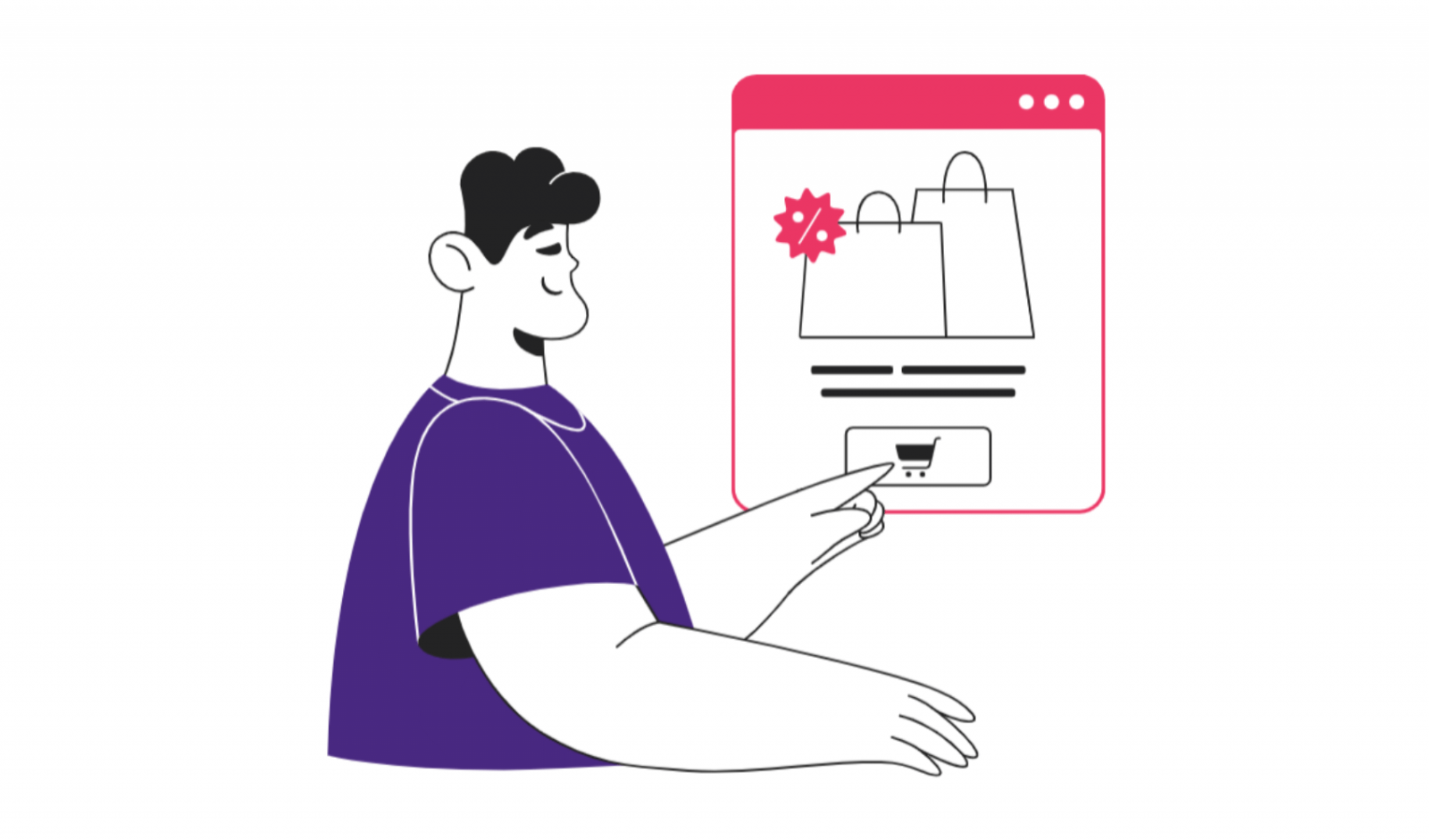Author: Chi Vo - Content Writer
Web apps have seen a substantial increase in popularity in recent years as a result of digitization booming. Businesses, in particular, see web apps as the most convenient way for their workers to work flexibly. As a result, with no bounds, web apps enable employees to work from anywhere, at any time.
Nowadays, most popular businesses such as Facebook, Coca-Cola, and many other big groups have multiple web applications designed for a variety of objectives and causes. In that circumstance, the number of web applications generated for various causes grows exponentially. To stay current, businesses should use this platform in their operations. To accomplish so, it’s essential to understand web app types, benefits, and use cases.
Let’s classify web applications based on their types and their functionalities.
1. Static Web App
The first type available on the Internet is the static web application, which uses HTML and CSS to display material and information. This is one of the simplest web app types, with limited content and no flexibility. These apps don't have personalization and alter once the page loads. However, editing a static web application's content is not easy because it entails obtaining, modifying, and returning HTML code. So, software developers and webmasters should use this app. Digital resumes and marketing lead acquisition pages are examples.
Below are some common use cases of Static web apps that VNEXT Global provides:
A. Blogging
Blogs are websites with a defined theme, and their contents are considered separate postings under specified topics. These posts' contents are placed on the web page by copy-pasting or typing in the HTML page description. For example, WordPress can do this without HTML coding knowledge.
B. Marketing & Sales Websites
Static websites are best for marketing and sales websites because they're flexible and trustworthy. It needs one-time posts for mission, vision, and history. Developers leave distinct portions for permanent elements and for changing the content as needed. Website handlers can upload and remove the content as needed. Static websites are more flexible than dynamic ones.
C. Under-construction Websites
Static websites are a preferable solution for websites or web applications still in development. These websites allow the owner to focus on development while having a completely constructed and functional product on the website.
It's easy to update websites with new codes without affecting their functionality. Static websites are easy to synchronize with DevOps applications, simplifying version-controlling. All issues can be solved easily, and if they can't be fixed quickly, they can be relocated to a fully functional website's prior version.
D. Domestic Websites
Domestic websites aren't industry-grade in terms of technology and usage because the owner doesn't need technical knowledge. This website doesn't require software experts. In most situations, it's held by a single individual or a select group of business owners. It doesn't require a directly allocated database, giving it a less difficult online application. Maintaining the website as a static app can help with scalability as it doesn't require dynamic loading when a new user visits.

2. Dynamic Web App
Dynamic web applications give real data based on user requests and are hence regarded as one of the greatest web application types. In comparison to static web applications, they have higher technical sophistication. There are numerous interaction components and approaches to direct the client's attention to the web app's services and products. Databases are used by such web apps to store all confidential and public data displayed on the Website. They usually include a login that allows the admin to manage the web app's backend and frontend aspects, as well as modify the content and integrate other enhance communication. The dynamic web app is applied in multiple programming languages, including PHP and ASP.NET.
To understand more about the dynamic web app, here are some use cases of this type.
When you sign in to Netflix, it will display movie or series suggestions depending on your selection. If you choose to watch sci-fi movies, Netflix will show you more sci-fi recommendations based on your pick. Below are three examples of web applications and their use cases.
- Netflix: As part of its business expansion, Netflix now allows customers to access the platform via browser and mobile. This allows the business to collect users’ data and generate suitable suggestions based on users’ behaviors.
- Facebook: The initial goal of Facebook is to make the world more accessible and connected with Facebook. Facebook's mission is to make it easier for people to communicate. The action of logging in to social media and interacting help Facebook collect the users’ behaviors based on their online activities.
- Hubspot: Hubspot is primarily used for marketing and sales. Their web apps allow you to manage emails, phone calls, and messages directly from the web application.

3. E-Commerce Web App
When your web application advertises products or services to potential clients directly, it is referred to as an e-commerce web application, which is similar to an online shopping store. Many of the e-commerce web app's basic characteristics include the addition of new products, the removal of obsolete and old products, the management of payments, the facilitation of digital payments, and a user-friendly interface. To execute all of these tasks, an effective management system is required. Quality web developers can ensure such applications are more user-friendly. Lazada, Amazon, Shopee, and so on are some of the most common instances of e-commerce web apps.
- Amazon: Started in 1994, Amazon has tremendously scaled by allowing users to order from their website and mobile apps.
- Shopee: Shopee is a popular online shopping platform in Southeast Asia and Taiwan. It is a regional platform that offers clients a simple and quick online shopping experience with robust payment and logistical assistance.
- Lazada: Lazada is Southeast Asia's large e-commerce marketplace. They have so far grown into Malaysia, Singapore, Indonesia, the Philippines, Vietnam, and Thailand. It provides cross-border selling chances to merchants by connecting them with a large number of willing buyers on the site.

4. Single-page web apps
Single-Page Applications (SPA) are a sort of dynamic web app that does not require browser reloads and operates as a separate unit of a website application. These web apps are rapid and dynamic since they leverage all commercial and technological techniques in the client-side browser. The SPA creation and implementation process is easy and quick. Because communication occurs during asynchronous navigation, dealing with the user's request and response is a speedier procedure. Furthermore, any sort of SPA web application can be adjusted to achieve the needed outcomes. The most serious issue with SPAs is that they do not adhere to SEO guidelines. Netflix, Twitter, and Gmail are all fantastic examples of single-page online applications.

5. Portal web application
A portal web application provides a single point of access to critical data for a specific sort of user. It is a web application that can access various portions of the home page. Portals are the greatest solution for organizations and businesses that want to create customized interfaces for their target audience. Only registered users have access, and the service provider can monitor the user's activity once the user logs in.
Below are some portal web app use cases that you should refer to:
- Coursera: Coursera's mission is to provide learners all around the world with life-changing learning experiences. Online courses can be accessed from anywhere, and degrees can be obtained from learning companies and colleges.
- Udemy: Udemy is a virtual learning platform that offers courses ranging from IT to business. The goal of Udemy is to provide everyone with access to education without charging exorbitant prices.
.png)
6. Progressive web app
Progressive web apps are cross-platform web applications that leverage the most up-to-date browser APIs (Application Programming Interface), functionalities, and progressive enhancement methods to provide an experience similar to that of a native mobile app.
A progressive web application is created using standard web technologies like HTML, CSS, and JavaScript.
The primary reason for selecting a progressive web app for your company is that it improves the speed and adaptability of online applications. Even if your internet connection is poor, employing PWA will allow you to access information without difficulty.
To understand more about web apps, here are some real case uses that you should know:
- Uber: Uber online was designed from scratch as a PWA to offer a similar booking experience to the native mobile app. Uber's PWA allows car booking on 2G networks. The PWA is useful for riders on low-end smartphones that aren't compatible with the Uber app. Uber's native web app enables speedy ride requests regardless of location, network speed, or device. The 50kB core program loads in 3 seconds on 2G.
- Pinterest: Pinterest's new mobile web experience is a PWA, built for international growth. Due to poor mobile performance, just 1% of Facebook's mobile users sign up, login, or install apps. Realizing there was a significant chance to enhance conversion, so they rebuilt the mobile web utilizing PWA technology. Mobile web time is up 40%, user-generated ad income is up 44%, and core interactions are up 60%.
- Spotify: Now PWA-powered creates your best music player. Due to a dispute between Spotify and Apple over Apple's 30% app store commission, Spotify started creating a PWA version of their app, as many other firms have. The PWA version is faster and has an adaptive UI that changes as the user navigates the app. As with other PWAs, users are prompted to add Spotify PWA to their home screen, making it more accessible.
.png)
Final thoughts
In this article, you have discovered 6 types of web applications, web application examples, and their use cases after going through all of them.
Certainly, different web applications are appropriate for various types of enterprises. E-commerce enterprises, for example, are more inclined to use e-commerce web apps. Portal web apps are preferred by educational institutions. As a result, the web app you choose should be based on your business kind and target demographic.
If you need assistance in building your own web app, please kindly contact us. As the leading web application development business, VNEXT Global will assist you in validating your web app concept and will give you a free consultation.
If you are looking for a trusted IT partner, VNEXT Global is the ideal choice. With 14+ years of experience, we surely can help you to optimize your business digitalization within a small budget and short time. Currently, we have 400+ IT consultants and developers in Mobile App, Web App, System, Blockchain Development and Testing Services. We have provided solutions to 600+ projects in several industries for clients worldwide. We are willing to become a companion on your way to success. Please tell us when is convenient for you to have an online meeting to discuss this further. Have a nice day!
Author: Chi Vo - Content Marketing Executive












